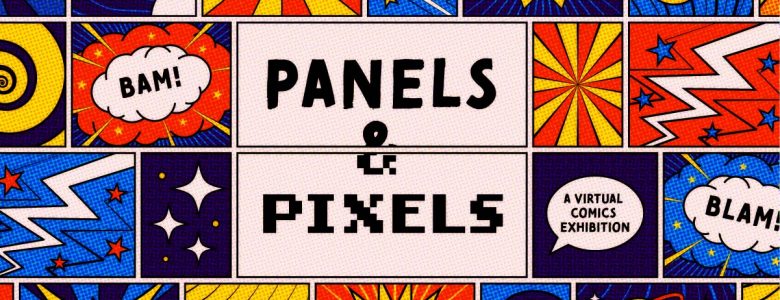 Thank you to everyone who contributed to our Panels & Pixels: A Virtual Comics Exhibition and live Zoom event on November 9, 2021, and especially to those who brought their comics, stories, and comic art to this event. We appreciate your willingness to share your interests, creativity, and artistic work with us and with each… Read more »
Thank you to everyone who contributed to our Panels & Pixels: A Virtual Comics Exhibition and live Zoom event on November 9, 2021, and especially to those who brought their comics, stories, and comic art to this event. We appreciate your willingness to share your interests, creativity, and artistic work with us and with each… Read more »
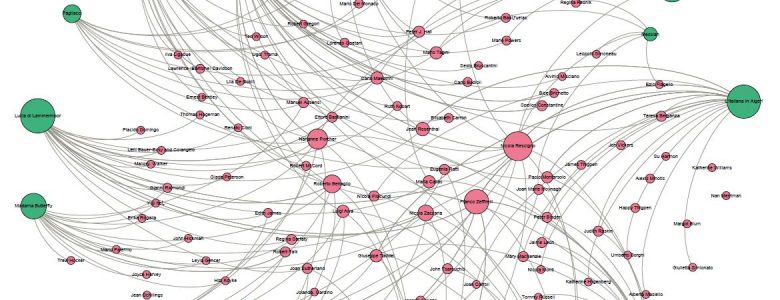 Author: Maristella Feustle Many of us have been doing basic visualizations of quantitative data since elementary school, turning numerical information into charts and graphs. Somewhere along the line, most of us have also encountered Venn diagrams for visualizing conceptual relationships and attributes held in common between entities. But when we think of visualization, quantitative visualizations… Read more »
Author: Maristella Feustle Many of us have been doing basic visualizations of quantitative data since elementary school, turning numerical information into charts and graphs. Somewhere along the line, most of us have also encountered Venn diagrams for visualizing conceptual relationships and attributes held in common between entities. But when we think of visualization, quantitative visualizations… Read more »
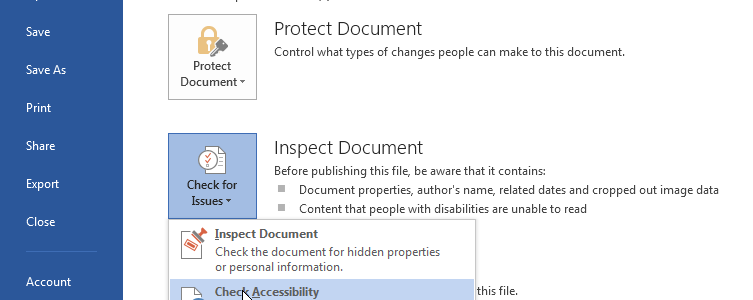 This is the last post in the mini-series on accessibility and Microsoft Word. In this post Conversion to HTML and PDF are discussed. Also how to understand and use the Accessibility Checker in Word. Lastly, there are some additional resources at the end for use. The programs that can be converted to PDF and which… Read more »
This is the last post in the mini-series on accessibility and Microsoft Word. In this post Conversion to HTML and PDF are discussed. Also how to understand and use the Accessibility Checker in Word. Lastly, there are some additional resources at the end for use. The programs that can be converted to PDF and which… Read more »
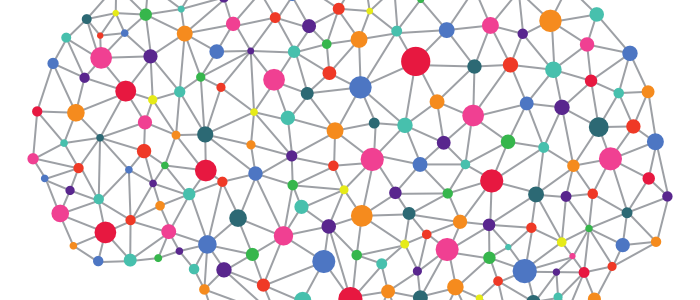 It seems that artificial intelligence enters more and more into the mainstream every day. Discussions around neural networks and how to best optimize and implement them happen everywhere, especially as the information on how to create them becomes more and more accessible to the public. However, one major issue I do not see being discussed… Read more »
Markov chains are definitely one of the more interesting and fun sets of statistics you can play around with. But they are excellent in the case of text generation. So what are Markov chains and how do they work? And how can we use them to make text? Simple Markov Chains Markov chains explain the… Read more »
It seems that artificial intelligence enters more and more into the mainstream every day. Discussions around neural networks and how to best optimize and implement them happen everywhere, especially as the information on how to create them becomes more and more accessible to the public. However, one major issue I do not see being discussed… Read more »
Markov chains are definitely one of the more interesting and fun sets of statistics you can play around with. But they are excellent in the case of text generation. So what are Markov chains and how do they work? And how can we use them to make text? Simple Markov Chains Markov chains explain the… Read more »
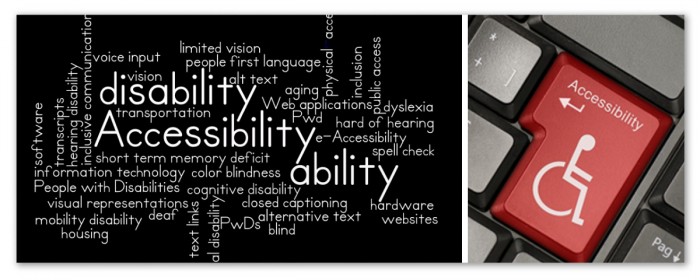 The next things to continue our discussion about MS Word accessibility is multimedia, conversions, and Word’s Accessibility Checker. Multimedia elements may or may not be used in any particular documents. However, if they are used you’ll need to consider such things as image alt tags, hyperlink texts, and screen tips. Conversion to HTML or… Read more »
The next things to continue our discussion about MS Word accessibility is multimedia, conversions, and Word’s Accessibility Checker. Multimedia elements may or may not be used in any particular documents. However, if they are used you’ll need to consider such things as image alt tags, hyperlink texts, and screen tips. Conversion to HTML or… Read more »
 This blog post continues the last on Microsoft Word and accessibility. This post will cover Content Element. Content elements such as text effects list formatting assist readers, coloration and contrast are low vision considerations, and there are some formatting tools you’ll want to avoid in the quest… Read more »
This blog post continues the last on Microsoft Word and accessibility. This post will cover Content Element. Content elements such as text effects list formatting assist readers, coloration and contrast are low vision considerations, and there are some formatting tools you’ll want to avoid in the quest… Read more »
 Lately, I’ve been extremely interested in the things that humans can create by collaborating with artificial intelligence. My first exploration of human/AI interaction dove into the works from writers at Botnik studios. These writers used predictive text keyboards to write exceptionally satirical versions of existing novels, recipe books, sitcom scripts, and even “Dear Abby” columns…. Read more »
Lately, I’ve been extremely interested in the things that humans can create by collaborating with artificial intelligence. My first exploration of human/AI interaction dove into the works from writers at Botnik studios. These writers used predictive text keyboards to write exceptionally satirical versions of existing novels, recipe books, sitcom scripts, and even “Dear Abby” columns…. Read more »
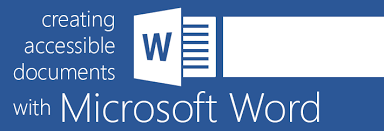 Our first accessibility blog of the new year! I hope you all have found the PDF and other accessibility posts helpful. To continue the series we will be looking a Microsoft Word. Have you ever had a student, classmate, or friend have trouble accessing (reading, screen reading, etc.) a Word document? Maybe you have had… Read more »
Our first accessibility blog of the new year! I hope you all have found the PDF and other accessibility posts helpful. To continue the series we will be looking a Microsoft Word. Have you ever had a student, classmate, or friend have trouble accessing (reading, screen reading, etc.) a Word document? Maybe you have had… Read more »
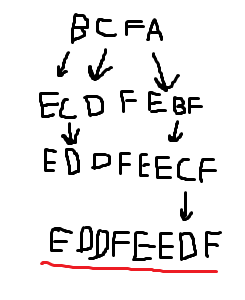 Tracery is a grammar construction tool widely used in making complex sentences, and it serves as a major text generation tool for Twitter bots. In this post, we’ll cover: what a context-free grammar is, how to use Tracery as a context-free grammar, show a tool for making Twitter bots with Tracery widely used by Twitter… Read more »
Tracery is a grammar construction tool widely used in making complex sentences, and it serves as a major text generation tool for Twitter bots. In this post, we’ll cover: what a context-free grammar is, how to use Tracery as a context-free grammar, show a tool for making Twitter bots with Tracery widely used by Twitter… Read more »
 Author: Maristella Feustle Many of us have been doing basic visualizations of quantitative data since elementary school, turning numerical information into charts and graphs. Somewhere along the line, most of us have also encountered Venn diagrams for visualizing conceptual relationships and attributes held in common between entities. But when we think of visualization, quantitative visualizations… Read more »
Author: Maristella Feustle Many of us have been doing basic visualizations of quantitative data since elementary school, turning numerical information into charts and graphs. Somewhere along the line, most of us have also encountered Venn diagrams for visualizing conceptual relationships and attributes held in common between entities. But when we think of visualization, quantitative visualizations… Read more »
 This is the last post in the mini-series on accessibility and Microsoft Word. In this post Conversion to HTML and PDF are discussed. Also how to understand and use the Accessibility Checker in Word. Lastly, there are some additional resources at the end for use. The programs that can be converted to PDF and which… Read more »
This is the last post in the mini-series on accessibility and Microsoft Word. In this post Conversion to HTML and PDF are discussed. Also how to understand and use the Accessibility Checker in Word. Lastly, there are some additional resources at the end for use. The programs that can be converted to PDF and which… Read more »
 It seems that artificial intelligence enters more and more into the mainstream every day. Discussions around neural networks and how to best optimize and implement them happen everywhere, especially as the information on how to create them becomes more and more accessible to the public. However, one major issue I do not see being discussed… Read more »
It seems that artificial intelligence enters more and more into the mainstream every day. Discussions around neural networks and how to best optimize and implement them happen everywhere, especially as the information on how to create them becomes more and more accessible to the public. However, one major issue I do not see being discussed… Read more »
 The next things to continue our discussion about MS Word accessibility is multimedia, conversions, and Word’s Accessibility Checker. Multimedia elements may or may not be used in any particular documents. However, if they are used you’ll need to consider such things as image alt tags, hyperlink texts, and screen tips. Conversion to HTML or… Read more »
The next things to continue our discussion about MS Word accessibility is multimedia, conversions, and Word’s Accessibility Checker. Multimedia elements may or may not be used in any particular documents. However, if they are used you’ll need to consider such things as image alt tags, hyperlink texts, and screen tips. Conversion to HTML or… Read more »
 This blog post continues the last on Microsoft Word and accessibility. This post will cover Content Element. Content elements such as text effects list formatting assist readers, coloration and contrast are low vision considerations, and there are some formatting tools you’ll want to avoid in the quest… Read more »
This blog post continues the last on Microsoft Word and accessibility. This post will cover Content Element. Content elements such as text effects list formatting assist readers, coloration and contrast are low vision considerations, and there are some formatting tools you’ll want to avoid in the quest… Read more »
 Lately, I’ve been extremely interested in the things that humans can create by collaborating with artificial intelligence. My first exploration of human/AI interaction dove into the works from writers at Botnik studios. These writers used predictive text keyboards to write exceptionally satirical versions of existing novels, recipe books, sitcom scripts, and even “Dear Abby” columns…. Read more »
Lately, I’ve been extremely interested in the things that humans can create by collaborating with artificial intelligence. My first exploration of human/AI interaction dove into the works from writers at Botnik studios. These writers used predictive text keyboards to write exceptionally satirical versions of existing novels, recipe books, sitcom scripts, and even “Dear Abby” columns…. Read more »
 Our first accessibility blog of the new year! I hope you all have found the PDF and other accessibility posts helpful. To continue the series we will be looking a Microsoft Word. Have you ever had a student, classmate, or friend have trouble accessing (reading, screen reading, etc.) a Word document? Maybe you have had… Read more »
Our first accessibility blog of the new year! I hope you all have found the PDF and other accessibility posts helpful. To continue the series we will be looking a Microsoft Word. Have you ever had a student, classmate, or friend have trouble accessing (reading, screen reading, etc.) a Word document? Maybe you have had… Read more »
 Tracery is a grammar construction tool widely used in making complex sentences, and it serves as a major text generation tool for Twitter bots. In this post, we’ll cover: what a context-free grammar is, how to use Tracery as a context-free grammar, show a tool for making Twitter bots with Tracery widely used by Twitter… Read more »
Tracery is a grammar construction tool widely used in making complex sentences, and it serves as a major text generation tool for Twitter bots. In this post, we’ll cover: what a context-free grammar is, how to use Tracery as a context-free grammar, show a tool for making Twitter bots with Tracery widely used by Twitter… Read more »


